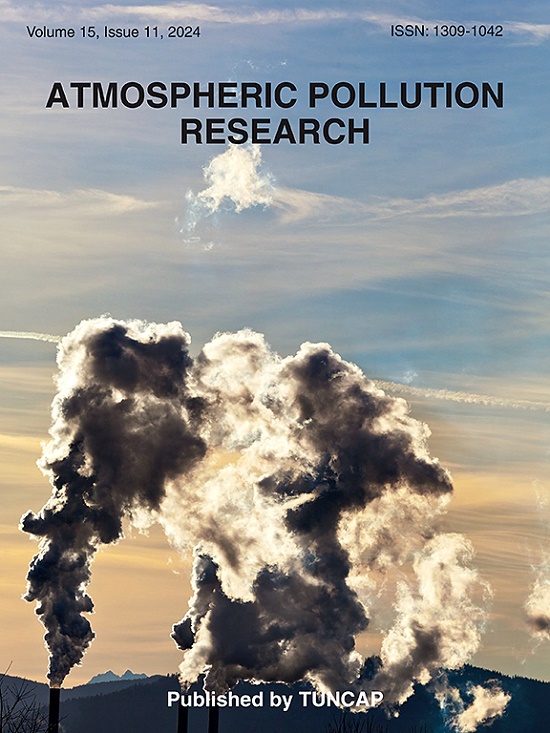Exploring different methods to evaluate the Urban Pollution Island intensity based on multi-year observations of aerosol and gases
IF 3.5
3区 环境科学与生态学
Q2 ENVIRONMENTAL SCIENCES
引用次数: 0
Abstract
This work proposes different methodologies for evaluating the Urban Pollution Island Intensity (UPII), varying the subset of urban air quality stations according to their environmental classification. In-situ observations of particulate matter (PM10 and PM2.5), nitrogen oxides (NO and NO2), and ozone (O3) collected in Rome (Italy) from 2018 to 2023 are examined.
Urban traffic stations, located near roads with medium-high traffic intensity, always recorded higher concentrations than the urban background sites. The selection of both urban traffic and background stations permits the most representative description of UPII and the pollution levels in the metropolitan area. UPII assumes the largest seasonal variation for PM10 and NO, while the daily cycle highlights a bimodal behaviour, with peaks corresponding to rush hours. NO2 peaks are shifted by 1 h compared to NO, while for O3 UPII shows positive values during summertime rush hours. Multi-pollutant air quality indices confirm poor air quality in the city, predominantly during the colder months.
The findings demonstrate that pollution is mainly attributable to NO2, PM10, and O3 in downtown Rome and to PM2.5 and O3 in the countryside. The pollution variations suggest the combined effect of emission-based, meteorological-based, and photochemical-based factors, which must be considered when tailored policies for improving air quality are designed.
探索基于多年气溶胶和气体观测的城市污染岛强度评价方法
这项工作提出了不同的方法来评估城市污染岛强度(UPII),根据其环境分类改变城市空气质量站的子集。对2018 - 2023年在意大利罗马收集的颗粒物(PM10和PM2.5)、氮氧化物(NO和NO2)和臭氧(O3)的现场观测数据进行了分析。位于中高交通强度道路附近的城市交通站点的浓度始终高于城市背景站点。城市交通和背景站的选择可以最具代表性地描述UPII和大都市区的污染水平。UPII假定PM10和NO的季节性变化最大,而每日周期则强调双峰行为,峰值与高峰时间相对应。与NO相比,NO2峰值移动了1 h,而O3的UPII在夏季高峰时段呈现正值。多种污染物空气质量指数证实,北京的空气质量很差,尤其是在寒冷的月份。研究结果表明,罗马市中心的污染主要来自二氧化氮、PM10和臭氧,农村的污染主要来自PM2.5和臭氧。污染变化表明基于排放、基于气象和基于光化学的因素的综合影响,在设计改善空气质量的有针对性的政策时必须考虑这些因素。
本文章由计算机程序翻译,如有差异,请以英文原文为准。
求助全文
约1分钟内获得全文
求助全文
来源期刊

Atmospheric Pollution Research
ENVIRONMENTAL SCIENCES-
CiteScore
8.30
自引率
6.70%
发文量
256
审稿时长
36 days
期刊介绍:
Atmospheric Pollution Research (APR) is an international journal designed for the publication of articles on air pollution. Papers should present novel experimental results, theory and modeling of air pollution on local, regional, or global scales. Areas covered are research on inorganic, organic, and persistent organic air pollutants, air quality monitoring, air quality management, atmospheric dispersion and transport, air-surface (soil, water, and vegetation) exchange of pollutants, dry and wet deposition, indoor air quality, exposure assessment, health effects, satellite measurements, natural emissions, atmospheric chemistry, greenhouse gases, and effects on climate change.
 求助内容:
求助内容: 应助结果提醒方式:
应助结果提醒方式:


